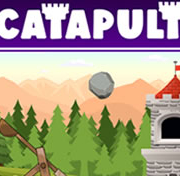Organs of the Human, Body – Science Activity For Kids
This science activity helps children identify and describe the functions of various organs in their bodies. They will be able to tell the difference between the functions of the heart and the brain. They will also be able to learn about the parts of the digestive tract, such as the stomach and intestines.
This is an important activity, which introduces the major organ systems of the human body. These systems include a number of tissues and organs that all function together as one functional unit. These systems are composed of the skin, stomach, esophagus and intestines. They break down food into nutrients and eliminate any waste. The excretory system is responsible for removing toxic nitrogen compounds from the blood and other waste. The nervous system is composed of sensory organs that transmit sensory information to the brain and send impulses to trigger appropriate glandular or muscular responses.
Students can practice classroom skills by dividing them into groups and playing the parts of various organs within the body. Students research the function of each organ, and then create a skit about which one is the most important. Students learn about the functions and composition of each organ and how they interact with one another. This activity helps them to understand the importance of homeostasis and allows them to function well throughout their lives.
Each organ of the body performs daily tasks. This game demonstrates the different roles and how they interact to maintain a healthy system. Students will learn how different organs work together to make the human body function. This worksheet includes descriptions and images that can be used as a supplement to any other activity.
Each system is responsible to maintaining health and balance in the body. This will be taught to children. The heart is the largest organ of the circulatory system and pumps blood around the body. It has an intricate electrical system that regulates the heart rate. High heart rates indicate that the person works hard. Low heart rates mean that the person has stopped working.
There are many organs in the human body. The digestive system is responsible for breaking down food and assimilation of nutrients. This is how the body can repair and grow. Mastication is the first step in this process. This is when saliva and food mix together. The bolus then travels down into the stomach. The stomach produces powerful enzymes that help to break down the food and make it into a paste.
The respiratory system is responsible for breathing. Its role is to supply oxygen to the body. The thick, muscle-covered area directly below the lungs is called the diaphragm. It allows the lungs to expand and contract as you breathe. The most important organ of the metabolic system is the liver. It transforms food into useful forms and detoxifies some substances. It removes blood from the digestive system and joins blood flow to other areas of the body. Under the rib cage is where you will find your liver.











